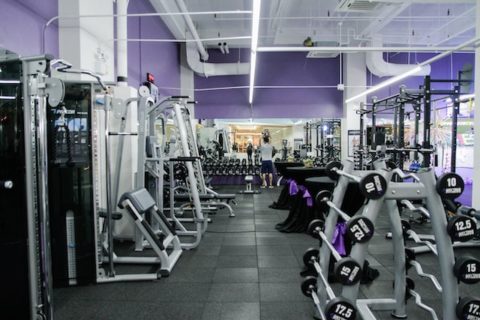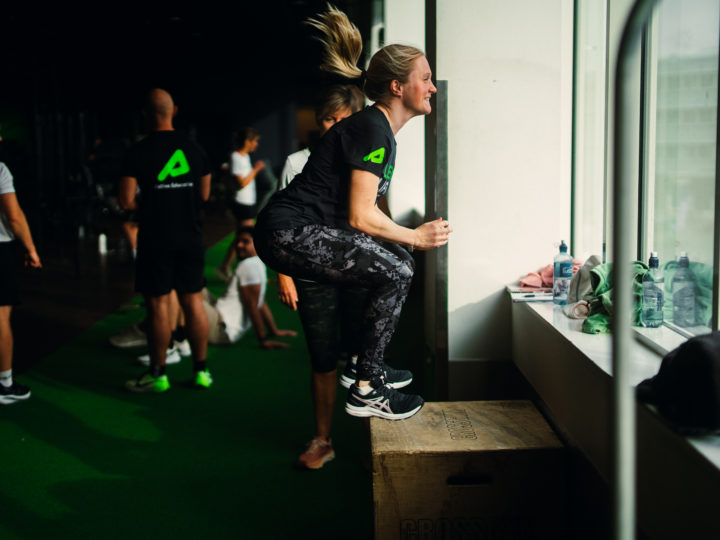
Hva er hypertrofi?
Dersom du er interessert i styrketrening har du kanskje et forhold til begrepet hypertrofi. Hypertrofi er når muskelcellene vokser i størrelse, eller for å være mer konkret; du får flere kontraktile proteiner (1).
Se for deg at du skal delta i en tautrekkingskonkurranse. Desto flere personer som trekker i tauet, desto større kraft kan laget skape. Det er akkurat dette som skjer i musklene når vi trener; flere kontraktile proteiner kan bidra til å skape større kraft/hastighet over det leddet muskelen jobber.
Mekanismer som stimulerer til muskelvekst
Det er spesielt to faktorer som er verdt å nevne når det kommer til muskelvekst:
1. Mekanisk drag
Mekanisk drag omhandler hvor stor kraft muskler og sener blir utsatt for. Når vi trener tung styrke utsettes muskulaturen for et større mekanisk drag sammenlignet med lette vekter.
2. Metabolsk stress
Metabolsk stress derimot oppnår vi gjennom å øke tiden muskelen er under belastning, eller ved å redusere pausene mellom settene. Du har kanskje kjent på pump-følelsen når du trener styrke? Det er en god indikasjon på at du har oppnådd et høyt metabolsk stress i muskulaturen.
La oss eksemplifisere dette nærmere:
Tung styrketrening (1-4 repetisjoner) kjennetegnes ved at man løfter tunge vekter (ca. 85 – 100 % av maks) og med relativt lange pauser mellom hvert sett (3-5 min). De tunge vektene bidrar til å skape et høyt mekanisk drag, men tung styrketrening med lange pauser bidrar ikke til et stort metabolsk stress. Velger du derimot litt lettere vekter (70-85% av maks) klarer du en plass mellom 6-12 repetisjoner.
Kombinerer du denne motstanden med relativt korte pauser (1-2 min) vil det metabolske stresset øke betraktelig. Kombinasjonen av et høyt mekanisk drag sammen med et høyt metabolsk stress er det som karakteriserer «hypertrofitrening».
Nå er det slik at du kan oppnå hypertrofi med både tunge og lette vekter, men kombinasjonen av de to faktorene over ser ut til å ha god effekt. Trener du med lettere vekter (12-20 repetisjoner) er avgjørende at du løfter tilnærmet til utmattelse.
Slik trener du hypertrofi:
- Velg en motstand som gjør at du klarer mellom 6 – 12 repetisjoner
- Hver repetisjon utføres med konstant hastighet
- Kort pause mellom hvert sett (1-2 min)
- Tren flere øvelser per muskelgruppe, men er du nybegynner anbefaler vi at du trener samme muskelgruppe flere ganger i uken.
- Kombiner hovedøvelser (f.eks benkpress) med isolasjonsøvelser (flies)
Andre metoder for muskelvekst:
Metodene under er nødvendigvis ikke bedre enn tradisjonell styrketrening, men de kan ofte bidra til å øke det metabolske stresset i en øvelse.
Supersett:
Superserier eller supersett består av to øvelser som gjennomføres rett etter hverandre uten pause. Her kan du kombinere f.eks press- og trekkøvelser eller kombinere en hovedøvelse med en isolasjonsøvelse på nærliggende muskelgrupper. Følg retningslinjene over hva gjelder motstand og pauser mellom supersettene.
Forced reps:
Forced reps er en metode hvor treningspartneren din hjelper deg med siste 1-3 repetisjoner slik at du klarer flere repetisjoner enn hva du hadde gjort på egen hånd. Velg en motstand som gjør at du klarer 6-10 repetisjoner selv før du får hjelp av treningspartneren.
Super slow-trening:
Denne metoden kjennetegnes ved at hver repetisjon utføres langsomt både i den konsentriske fasen og i den eksentriske fasen. Bruk gjerne en plass mellom 4-8 sekunder på begge fasene av løftet.
Lykke til med treningen!
Referanse:
- Raastad, T., Paulsen, G., Refsnes, P. E., Rønnestad, B. R. & Wisnes, A. R. (2010) Styrketrening – i teori og praksis. Gyldendal forlag.
